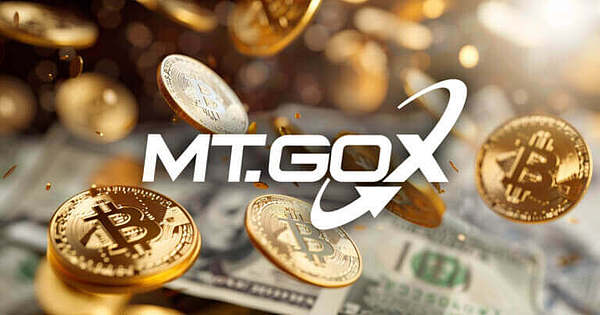Source: Blockchain Knight
Mt.Gox’s dormant period may not be over yet, but a series of tokens that have flowed out of its wallets have caught the market’s attention.
It is speculated that 137,890 BTC worth a total of $9.4 billion will be transferred to the wallets of creditors, and experts have mixed reactions, most of whom are worried that the selling pressure on BTC may increase, causing the price of BTC to fall.
Mt.Gox was once the world’s leading BTC exchange, but it was hacked in 2014 and lost more than 850,000 BTC.
After years of legal battles, Japanese authorities finally approved a rehabilitation plan in 2021, launching a legal process known as “civil rehabilitation” that allows creditors to recover some of their lost funds.
The plan has come into effect, and creditors who lost funds can now be allocated a portion of the remaining funds.
Mt.Gox plans to repay creditors, which may have contributed to the 4% drop in BTC prices in the past 24 hours, and the market was finally able to shake off this impact and rebound.
However, there are also concerns that these newly released BTC will flood the market, leading to a sell-off and driving prices further down.
Former Mt.Gox CEO Mark Karpeles confirmed in an official statement that while the BTC sell-off is not happening now, the transfer of tokens from Mt.Gox to a new wallet is part of a larger plan to distribute to creditors.

Based on the holding period of investors, the BTC market can be roughly divided into two categories: long-term holders (LTHs) and short-term holders (STHs).
• Long-term investors: These investors have held BTC for more than 155 days;
• Long-term holders: They are generally considered to be more decisive and less likely to panic sell during market downturns;
• Short-term holders: These investors bought BTC in the past 155 days. They are usually more responsive to market news and events and may react to negative sentiment by selling more quickly.
CryptoSlate senior analyst James Van Straten shared a view that revealed how Grayscale BTC Trust long-term holders sold about 1 million BTC in the past five months.
The market has shown impeccable resilience in digesting these sales. In contrast, Mt.Gox's repayment to creditors was only 1/10 of the 1 million BTC sold.
The recent rally in BTC, which reached this year's all-time high before the halving, was enough to incentivize some long-term holders to sell, as shown by their reduced total supply.
Van Straten believes that the recent LTH sell-off will dwarf the amount of BTC released by Mt. Gox through repayments.
According to on-chain data, data released earlier this year by research firm Glassnode showed that the number of BTC addresses holding BTC for more than 5 years hit a new low, indicating that some long-term investors are taking profits.
The large-scale flow of BTC has raised concerns that Mt. Gox's creditors may decide to sell their recovered BTC on exchanges, flooding the market and depressing prices.
The average daily inflow of BTC to exchanges has been hovering around 2016 levels, indicating that liquidity to absorb large sell-offs may be low, amplifying such concerns.
However, compared to this larger LTH sell-off, not all creditors who received BTC will sell the recovered BTC immediately. And this distribution has not yet officially taken effect.
Among the creditors, some may choose to hold or buy more depending on their investment strategy.
While the immediate market reaction may be negative due to short-term investor panic, the resolution of the Mt.Gox incident may increase investor confidence in the overall health of the BTC ecosystem.
The Mt.Gox incident and its potential impact on BTC prices highlight some vulnerabilities that are best addressed at a critical time in the market's maturity.
While short-term volatility is to be expected, especially when large amounts of BTC are being transferred, market stability and increased liquidity will increase investor confidence and set a safe tone for BTC's long-term performance.
 JinseFinance
JinseFinance
 JinseFinance
JinseFinance ZeZheng
ZeZheng Davin
Davin Coinlive
Coinlive  Coinlive
Coinlive  cryptopotato
cryptopotato Others
Others Coindesk
Coindesk Bitcoinist
Bitcoinist Cointelegraph
Cointelegraph